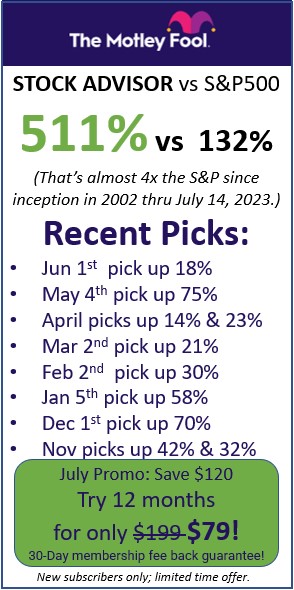This project is the “Core”, which most teachers use as the basis for their HTMW class stock game. The other recommendations in this library usually follow this format (with some variation). This makes it very flexible to work with your classes.

This project usually runs between 4 and 16 weeks. Longer contests tend to work better. This is because students are exposed to more “market news” for a longer time, and is a better introduction to “real” investing outside of the classroom.
Project Overview
The goal of this project is to introduce students to basic investing concepts, and get exposure to the real-world financial markets. Each student will build their own portfolio of stocks and mutual funds, with a set of initial investing goals, and regular investing journal entries. At the end of the session, students will create and present a 5-10 minute presentation to the class. The presentation should discuss the goals they set, and how they worked with the changing markets over the course of the contest. Students will also need to submit a report detailing their trading activities.
Project Set-Up
Contest Rules
Use these settings to set up your class contest:
- Initial Cash: $100,000
- Registration/Trading Dates: as long as your class allows (we recommend starting this project early – likely before your discuss investing in detail in the class itself)
- Minimum Prices: $3
- Short Selling: OFF
- Day Trading: ON
- Margin Trading: OFF
- Public Portfolios: OFF
- Allow US Stocks and Mutual Funds
- Commission: $10/trade
- Position Limits: 20% (students can’t invest more than 20% of their portfolio in any single stock)
- No resets
- Create an assignment
- Keep the teacher in the rankings
- Require Trading Notes

You will get a unique registration link to share with your students – this will let them create their login and join you into your class.
Assignment
You should also add an “Assignment” to your class. Your first “Assignment” should last the first week of the trading period, and include the 10 items in the “Stock Market Basics” section. These are designed to provide students with a basic introduction to what a portfolio is and how to make trades, with short articles, videos, and tutorials.
Assignments keep the experience educational – it provides a clear structure for what your students are expected to learn, while introducing them to the game and how it works!

You can create more assignments for each week, including other tasks that align with what you are discussing in class. Most classes assign the next 10 items, under “Intermediate Investing Tips”, as the second week’s assignment.
Project Kick-Off
Kick off the project using our Cornerstone Lesson Plan – this is a short introduction to glossary terms and the concepts of stocks of investing. At the end of the lesson, have students create their logins for your HTMW class contest, and work through the first 10 “Stock Market Basics” lesson. This should usually take about 1 hour.

Next, introduce your students to a few “Scenarios”. These will determine the kinds of portfolios they will build. They can choose between:
- A retirement portfolio – the goal will be constant, slow growth, with an emphasis on avoiding losses (a portfolio for someone who wants to retire in 15 years)
- A growth portfolio – the goal will be high growth with some risk (a portfolio of someone in their 20’s or 30’s looking for high returns)
Now put students into groups of 3-5, based on which scenario they chose. Have each group prepare a list of 10 ticker symbols (ideally from at least 3 different sectors) of companies that they are familiar with, and that they think will perform well for their scenario. Students can find the ticker symbols, sectors, and performance charts for all US and Canadian stocks in the “Quotes” tool on HTMW. This should take between 30 and 45 minutes.
Then break up the groups, and have each student individually should pick 5 of these companies, and add them to their HTMW portfolio. Each student should also write a 1 page summary about why they chose the companies they did, and why they DIDN’T choose the other 5 companies the group identified (this can be homework). This ensures each student will have a unique portfolio, but based on some group thinking.
Weekly Check-In
Ensure all students are checking their HTMW portfolio at least once a week (with the class rankings, most students will be checking a lot more often!). You can post the class rankings at the front of class to make sure students are staying engaged.
Keep using Assignments! You can easily track which students are participating, and remind students who start falling behind. Plus, the lessons are a great supplement to what you are already covering in class!
You will also want to encourage students to continue trading for the duration of the contest. Require students to make at least 3 trades in their portfolio each week (you can require this with an Assignment), and they should both be keeping Trade Notes with each trade, and a 1 paragraph Trade Summary that gives a short summary of what happened in their portfolio each week. This summary should include things like what stocks did well, which did poorly, how did market news impact their holdings, and how it relates back to other class topics under discussion.
Final Report
At the end of the trading period, student’s portfolios will automatically freeze, so they can continue to log in and see how they did at the end of the last day, but not place any new trades.
This gives the opportunity for students to prepare a final “Investment Report”. The Investment Report should be between 3-5 pages, divided into sections.
- A summary of their investing scenario, and how well they achieved their investing objectives
- A graph showing their portfolio performance for the duration of the contest
- A list of significant events during the contest that had a big impact on their portfolio (news reports impacting stock prices, ect)
- A pie chart showing their final holdings
- A profit/loss summary, showing where exactly they made and lost money
- An appendix with all of their weekly investing journals
Happy trading and let us know if you have any questions! If you have your own awesome class stock project that your students really loved, please share so other teachers can give it a try!

 Oil Price Slides Again On Inventory Data!
Oil Price Slides Again On Inventory Data!